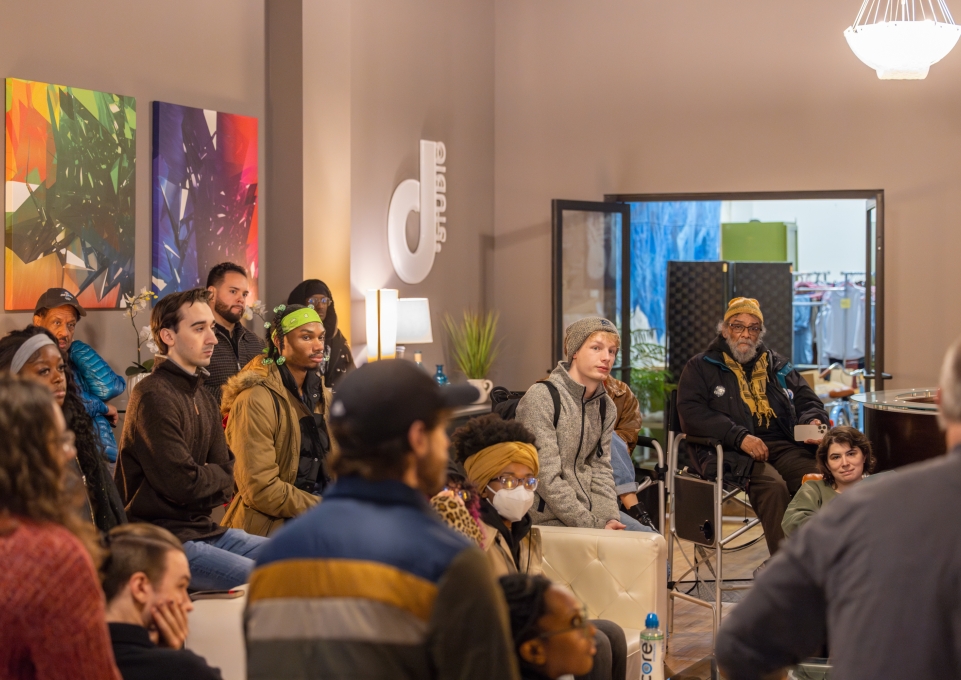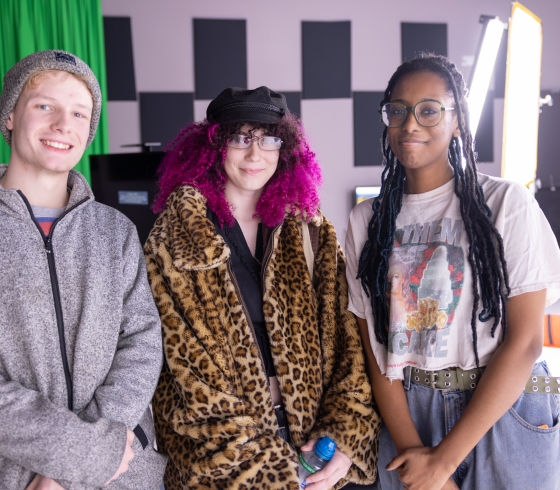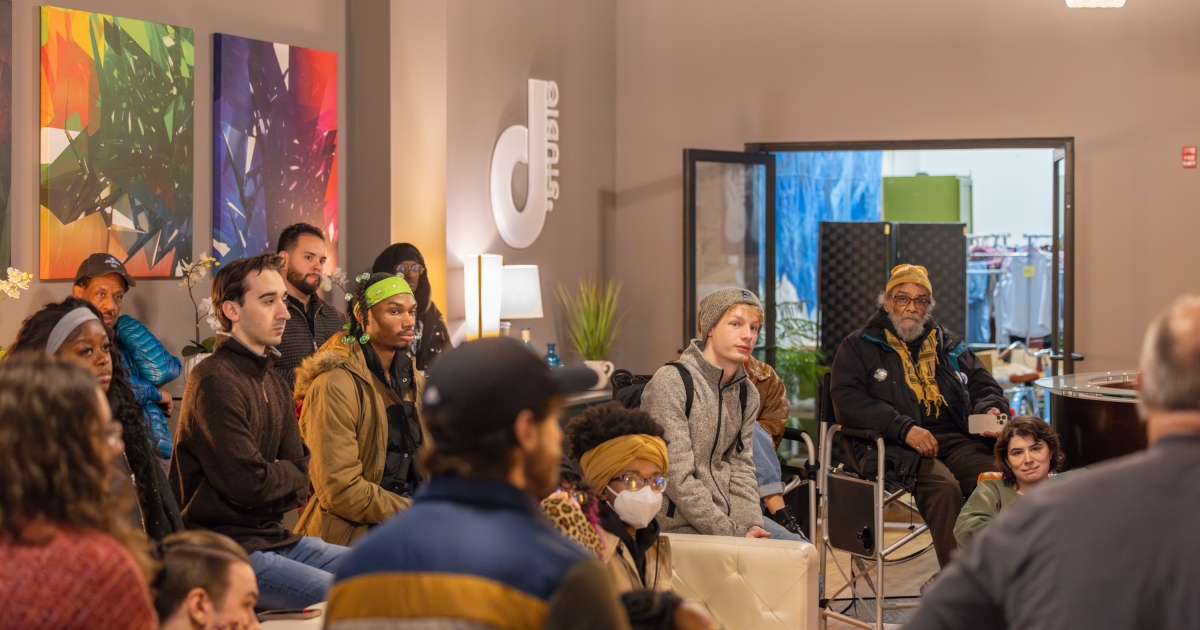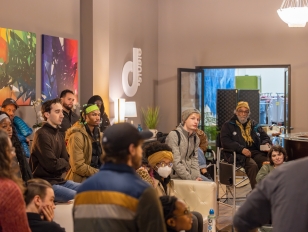
In the eight months since its inception, Buffalo State’s Post Production Diversity Initiative (PPDI) has had a monumental impact on its 22 participants—11 Buffalo State students majoring in digital music production, media production, or television and film arts, and 11 community members (including Buffalo State alumni), ranging in age from early twenties to early sixties.
While Western New York is home to hundreds of film industry professionals—actors, scenic painters, props masters, and more—its editor pool is smaller. PPDI, a collaboration between Buffalo State University; the Motion Picture Editors Guild – New York; the media company Avid; and Buffalo FilmWorks, aims to bridge the gap between education and professional application, as well as further values like diversity and accessibility, so that when productions film in Western New York, they don’t need to hire editors from outside the region. The free one-year program prepares participants from diverse backgrounds for entry-level careers in video editing and audio mixing in the music, video, and media industries.
“Our participants have a variety in experiences and aspirations, but their passion is evident,” said program manager Robin Lazzara. “I look around the classroom and see so many different faces striving toward a similar goal.”
“I look around the classroom and see so many different faces striving toward a similar goal.”
The program enables participants to learn from seasoned professionals like Lazzara, who, in addition to being a filmmaker, is founder of Glow Video and co-founder of the Film Neighbor Network, an initiative created to diversify the film workforce in Western New York by making education in industry practices free and easily accessible. Lazzara’s position, as well as the program’s workshops, field trips, and courses are funded by a New York State Workforce Diversity Grant.
Some participants, like community member Jake Marciniak, joined PPDI to enhance the work they were already doing.
“I joined the program in the hopes of getting a certification with Avid for Pro Tools so that I can use it in my work with Mammoth Recording Studio,” Marciniak said. “I’m an audio-focused person, so the audio stuff has been the most enriching and important for me, but I think it’s cool that the program has something for everyone.”
After receiving its funding, PPDI opened applications. Lazzara said that the program initially planned to accept 18 people but expanded to accommodate overwhelming response.
So far, PPDI participants have participated in six virtual sessions with professional editors from the Motion Picture Editors Guild, including a two-time Emmy Award-winning dialogue editor and workshops with Buffalo State’s Career and Professional Education Center (CAPE) focusing on resumes, cover letters, professionalism, and online presence.
“I’m getting lessons that most students never get,” said Tallulah Gordon, a senior individualized studies and experimental media production major. “It’s a privileged opportunity to be able to learn from professionals in this field who have worked on movies and television shows that I’m familiar with. We’re getting an inside scoop on what the actual professionals do.”
Lazzara added, “It's been so rewarding getting to watch our participants learn from seasoned industry post-production professionals and grow alongside one another.”
The program’s creative portfolio classes, instructed by Aitina Fareed-Cooke, ’12, ’16—creative arts strategist, national recording artist, and founder of the award-winning media arts production company Get Fokus’d Productions—aim to help participants articulate personal stories and motivations behind their work.

PPDI participants at dPost studios
“They are creating creative portfolios so that they can walk away with something solid to showcase their work, who they are, and how people can get in touch with them,” Fareed-Cooke said. “This is so they can continue to gain work in order to drive sustainability within the creative industry.”
In addition to workshops, the PPDI cohort enjoyed a field trip to dPost, a local post-production house, where they networked with local professional editors and toured filming stages and editing bays. Upcoming local field trips include Mammoth Recording Studio, GCR Audio, the WNED/WBFO building. These visits help increase awareness around Western New York’s growing production opportunities, which have been on the rise for the past decade.
“It’s opened my eyes to some of the levels of production houses or production centers in the city,” said participant Kamau R.E. Fields.
Before PPDI concludes, the cohort will take a trip to New York City at the end of the semester to visit multiple post-production houses, have opportunity for participants to earn certification in Avid Media Composer and Pro Tools, and be connected to ongoing mentors.
PPDI is currently applying for a second year of funding.
“Under Robin Lazzara’s leadership, PPDI has been phenomenally successful,” said Dorothea Braemer, associate professor of media production and PPDI’s chief investigator. “We are hopeful we will be able to continue for a second year. We already have a long list of people who want to apply.”
“A lot of certain groups don’t get the opportunities to work in this industry,” added participant Renato Graham. “This program gives you a guide to how to get into it.”
Photos by Jesse Steffan-Colucci, Buffalo State photographer.



